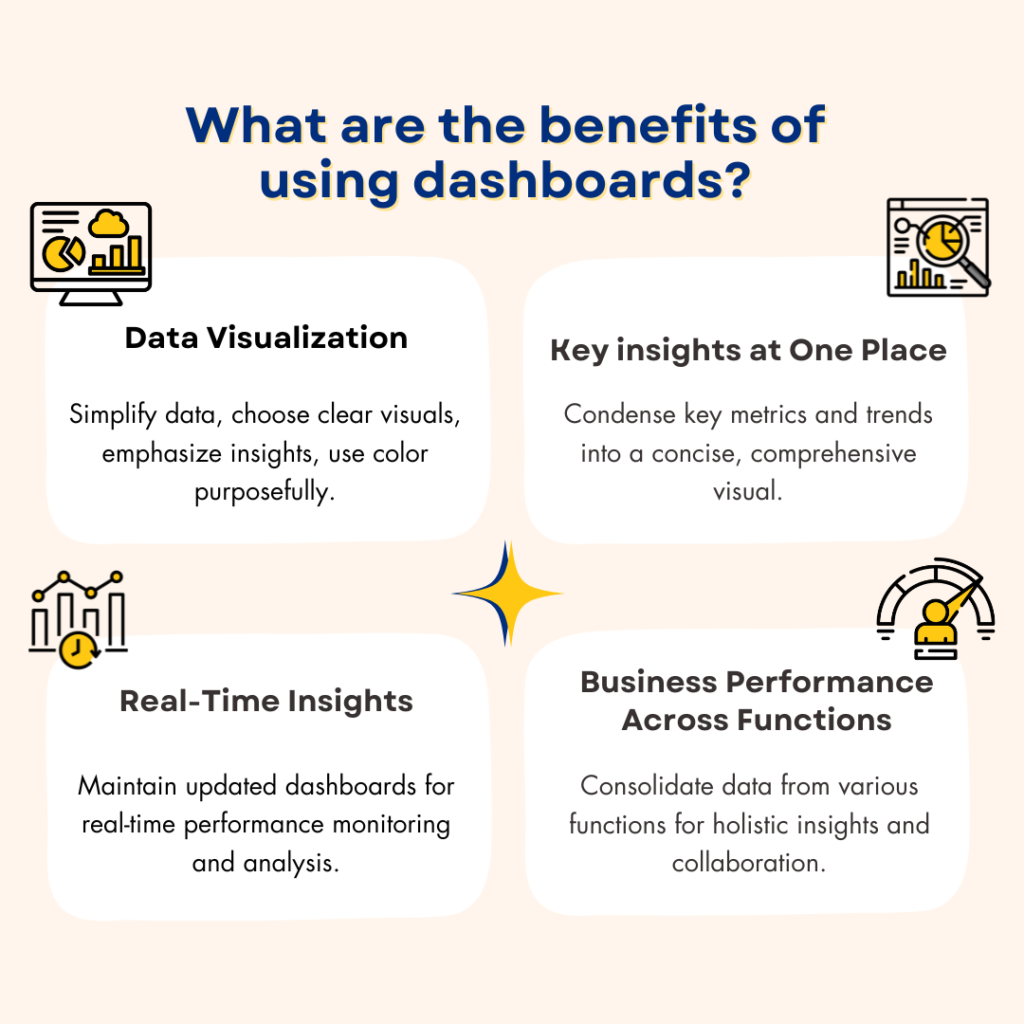In our data-driven society business are creating more data than ever. Data can be an asset however, it can seem complex and hard to understand of.
But why do you need to creating dashboards if there are already reports up?
Imagine yourself in an library, with thousands of books full of information and knowledge. They contain the answers to all kinds of questions however, the information is scattered across various books in different locations. The library is huge and the data is incomprehensible. This means that you’re not able to comprehend the information that lie within these pages.
A similar analogy could be applied to business data too. There are numerous reports for business that are consumed every day while managing the business’s operations. Although they are essential however, they become to handle, especially for business owners/entrepreneurs as well as major decision makers.
Imagine trying to navigate your way through the crowded terrain without any map. Dashboards are where they are useful. Like a map, which simplifies the complexity of surrounding, dashboards simplify the complexity of data.
A dashboard is an image representation of data that allows users quickly and efficiently comprehend the most important indicators and trends in their company. Dashboards are utilized to monitor the performance of marketing, sales operations, customer support and other important pillars of a company.
Through simplifying complicated data into easily understood visuals, dashboards help companies to spot issues to improve performance, as well as make better choices.
What are the benefits of using dashboards?

Dashboards can assist businesses to make better decisions as they provide them with a precise and precise analysis of their information. It can assist businesses to find out where they are struggling, track their the progress made, and make informed decisions regarding their future plans.
Improved decision-making:
Increased efficiency:
Dashboards can assist businesses in enhance efficiency by automating processes and providing users with the data they require in their reach. This frees up the time of employees to focus on other areas like sales or customer service.
Better communication:
Dashboards can assist businesses in enhance communication by offering an accessible location for data that is easily shared with partners, employees as well as customers. This will help keep everyone on the same track and pursuing the same objectives.
Better understanding of business
Dashboards can assist businesses to get a better grasp of their operations by offering them insight into their information. It can assist businesses to pinpoint areas that need improvement, devise new strategies and make better choices.
How do you create efficient dashboards?
In order to create efficient dashboards, it is essential to keep these points in your mind:
Set a goal that is clear. What are you hoping to accomplish with your dashboard? Once you’ve identified your objective it is time by selecting the best metrics and data to track.
Make it simple. The amount of information available can become confusing and difficult to comprehend. Select the most crucial indicators to track and concentrate on them.
Make use of visuals. Visuals can be a powerful method to convey information. Make use of graphs, charts as well as others to help make data easier to comprehend.
Create an interactive. Users must be able to dig through the information for more in-depth details. This can help them comprehend the data more effectively and make better choices.
Regularly update. Dashboards must be regularly updated with the most current information. This will ensure that the users are able to access the most recent information.
Some use-cases to consider:
Here are a few instances of ways that dashboards could be utilized to simplify complex data across different sectors:
Retailers can utilize a dashboard that tracks inventory, sales as well as customer behavior. The data can be utilized to spot patterns and make better pricing choices and improve customer service.
A manufacturing firm can make use of a dashboard for tracking production, quality, as well as costs. The data can be used to pinpoint production bottlenecks, boost efficiency and cut down on the amount of waste.
Conclusion
Dashboards are a useful tool that allows businesses simplify complicated data and make better choices. If you follow the guidelines below, you can design powerful dashboards that assist your business in its success. Dashboards help companies simplify complicated information and make better decisions which can result in increased efficiency, profits, and satisfaction of customers.
These are only some examples of the ways dashboards can be utilized to simplify complicated data and boost performance of businesses. Through the use of dashboards companies can get more insight into their data, and make better decisions.
The new TallyPrime 4.0
The wait is over as TallyPrime is here with much more than just interactive dashboards in its latest release—TallyPrime4.0.
To meet the requirements of each user and business to meet the needs of every company and user, the new flexible and adaptable Dashboards are packed with many options.
The information from various reports are presented in distinct “Tiles” all on one screen, making it easier to comprehend the key financial aspects of the company. It can be completely adjusted and adaptable to meet each need of the business or user.
A dynamic dashboard that’s fully functional, allowing users to drill-down to get more detailed information from any field, including graphs.
You can arrange the dashboard in a manner that best suits your needs by putting in, rearranging and removing tiles.
The ability to set the information for each tile by adding or removing the elements of data most relevant to you.
and many and much more.
Read More




